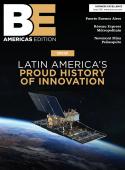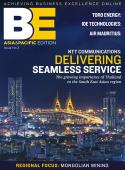Trained on results┬áTestAmerica Laboratories, Inc. has seen steady growth in demand for its environmental testing services in recent years. Keith Regan learns how extensive training and investment in technology are key to meeting rising demand in a slowing economy. The facility that today is the Buffalo, New York, laboratory of TestAmerica Laboratories, Inc. has a long history of serving clients with environmental testing needs. In its early years the lab was run by a local landfill company. In the early 1980s when the Love Canal controversy erupted, the lab came into national prominence, as there was a sudden surge in demand for the environmental testing services that the Buffalo laboratory specializes in.┬á┬áSince that time, lab ownership has changed from a sole proprietorship to being owned by one of the worldÔÇÖs largest commercial utility management firms and most recently to ownership held by a major private equity company, HIG Capital. Through a history of partnership, acquisition and merger, TestAmerica has become the largest laboratory network in the world, focused specifically on environmental analytical applications. TestAmerica operates 39 laboratory facilities and 27 service centers, including operations in Alaska and Hawaii, and also manages three affiliate operations in Southeast Asia. Collectively, the TestAmerica network offers the industryÔÇÖs broadest array of environmental testing applications for the evaluation of water, soil, air, sediments, industrial wastes, tissue and biota.The Buffalo laboratory is nationally recognized as a leading expert in environmental chemistry, particularly in the area of analytical support required by the nationÔÇÖs landfills, which are governed under Subtitles C & D of the Resource Conservation and Recovery Act (RCRA). The wider base of customers supported by the Buffalo laboratory include industry, commercial developers, government agencies at the municipal, state and federal levels, along with a diverse set of consulting and engineering firms that specialize in the investigation and management of environmental issues. ÔÇ£The evolution of this lab is a direct result of the ever-changing demands of our client base. Over the years we have seen the Buffalo facility expand to incorporate more than 300 varieties of environmental testing applications requiring the use and coordination of more than 50 unique high-tech instruments,ÔÇØ says Chris Spencer, laboratory director. The technical expertise and customer service offered by the Buffalo lab has resulted in an average annual growth rate between five and ten percent over the past four years in the midst of one of the most challenging economic climates this country has experienced in decades. Currently, the lab is in the early stages of its latest physical expansion. All samples brought into the lab are subject to strict handling, preservation and disposal protocols. Adequate lab space and leading-edge information management systems are a necessary and critical component to ensure the integrity of the analytical process. ÔÇ£We will be able to increase our capacity with the changes weÔÇÖre making to the front end of the business and through strategic investments in technology,ÔÇØ Spencer adds. The lab is in the process of installing a new laboratory information management system (LIMS). The introduction of this highly specialized, customizable software system marks a major shift for the lab. ÔÇ£This isnÔÇÖt like upgrading Windows from XP to Vista; this endeavor requires switching to an entirely new operating system, building from the ground up,ÔÇØ Spencer says. ÔÇ£The last time we did this was 15 years ago; itÔÇÖs a major implementation. However, we anticipate that the benefits of doing so will far outweigh those we realized 15 years ago.ÔÇØSystem installation, including training for all employees, is expected to take several months. The investment of time and money will be rapidly offset by the greatly improved operational efficiencies and the wider market appeal for the services it will now be able to offer. While TestAmerica is often recognized for its leadership in the area of technology, it has an equal passion for employee training and development. ÔÇ£I think training is not only a strength but a true market differentiator,ÔÇØ says Spencer. Through a local branch of the nearby community college, the firm has created a customized annual training event for the local management team, as well as a workforce development program for all employees that reinforces the companyÔÇÖs belief that everyone can take a leadership role. ÔÇ£These are intensive six-month training sessions, and we really get a chance to mold the training materials to suit our needs.ÔÇØSpencer says there is always a challenge in finding enough highly qualified chemists to staff the lab. The firm uses the Internet to recruit outside of Buffalo, but the rugged climate in the area makes it difficult to attract highly qualified talent who also have a willingness to relocate. Spencer is aiming to improve the companyÔÇÖs chances of landing more local college graduates and people with ties to the area. ÔÇ£ThereÔÇÖs a lot of interest in forensic chemistry because of the whole ÔÇÿCSIÔÇÖ phenomenon,ÔÇØ he says, referring to the current crop of wildly popular crime-solving television shows. ÔÇ£ThatÔÇÖs not exactly what we do, but students who studied in that field have the basic skills weÔÇÖre looking for and will get the opportunity to apply those skills in a very dynamic environment.ÔÇØ┬á Looking ahead, Spencer says governmental spending at both the state and federal levels is still largely in question, but that the testing required by landfills and industrial operations to maintain compliance with EPA regulations remains strong. The lab is always evaluating areas where its core competency can be applied in an effort to take advantage of fast-growing areas. ÔÇ£ThereÔÇÖs a whole field of emerging contaminants that will become routine testing at some point,ÔÇØ Spencer adds. For instance, last year the focus turned to flame-retardant chemicals found in some furniture. ÔÇ£These are all areas where we do a modest amount of testing currently but that may blossom into major market segments as human health concerns continue to grow.ÔÇØ ÔÇô Editorial research by Tim Conlan┬á









